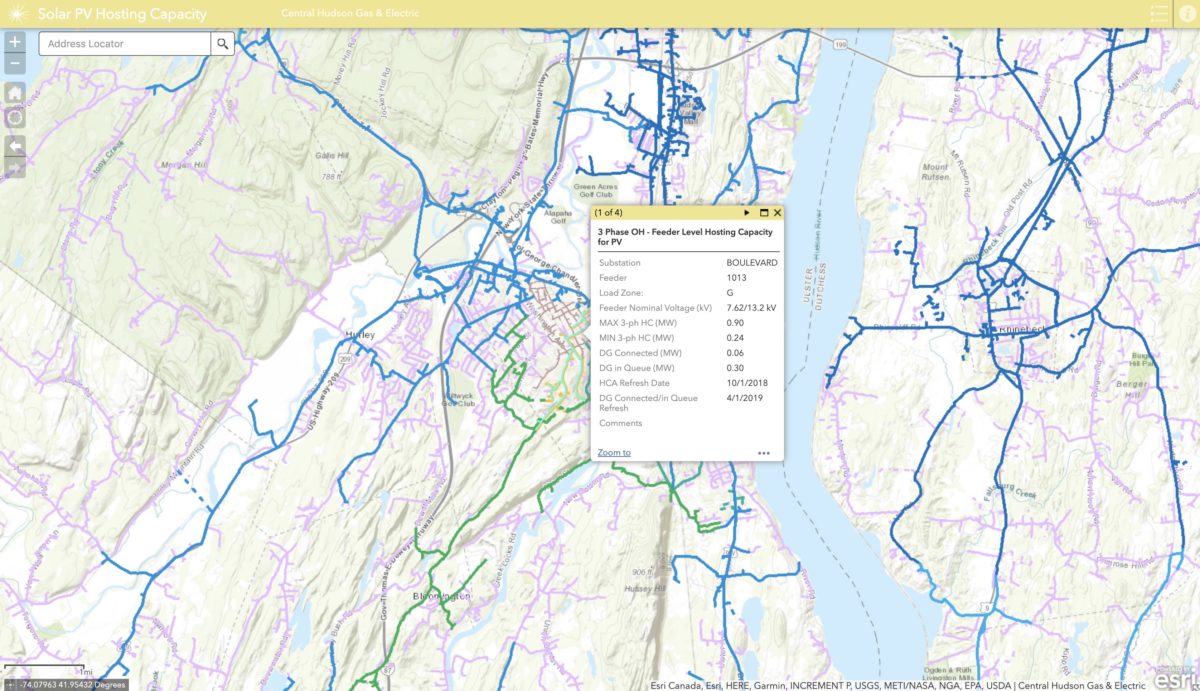Two Georgia solar associations have called for state regulators to require Georgia Power to produce a hosting capacity map, to save developers of distributed solar “substantial time and money” compared to the “currently complex and expensive interconnection process,” explained Georgia Solar Energy Association (GSEA) board member Thatcher Young.
A hosting capacity map, which indicates which grid distribution circuits can easily accept distributed solar without upgrading the circuit, will enable solar developers to identify “ideal locations” for new distributed solar generation, said Mr. Young, who is vice president of business development for Velo Solar.
GSEA made its request in joint testimony, together with the Georgia Solar Energy Industries Association, regarding Georgia Power’s proposed integrated resource plan.
Hosting capacity maps are already available online from utilities in several states, notably in response to regulatory requirements in California and New York. “Before these maps, developers had to get site capacity information through one-off requests to utilities, which was onerous and expensive,” said Sean Gallagher, vice president of state affairs at the Solar Energy Industries Association (SEIA).
A wide range of factors significantly impact hosting capacity and how it is calculated, notes a 2018 report from the Electric Power Research Institute (EPRI). Factors that influence hosting capacity calculations include “the inputs and assumptions used for distributed energy resources, and grid models used for the analysis.”
SEIA provided links to the hosting capacity maps for California and New York:
- California: Pacific Gas and Electric map; Southern California Edison map; San Diego Gas & Electric map
- New York: Central Hudson map; Consolidated Edison map; National Grid map; New York State Electric & Gas and Rochester Gas & Electric combined map; Orange and Rockland Utilities map
The Georgia solar associations provided in their testimony links to hosting capacity maps that other utilities have made available online:
Last year, ComEd in Illinois also published a hosting capacity map.
In Hawaii, the solar community helped Hawaiian Electric—after the utility cut off interconnection requests for a period of time—to develop a better understanding of hosting capacity on its lines.
The National Renewable Energy Laboratory has published two reports this year related to hosting capacity: New Approaches to Distributed PV Interconnection and An Overview of Distributed Energy Resource (DER) Interconnection.
This content is protected by copyright and may not be reused. If you want to cooperate with us and would like to reuse some of our content, please contact: editors@pv-magazine.com.








By submitting this form you agree to pv magazine using your data for the purposes of publishing your comment.
Your personal data will only be disclosed or otherwise transmitted to third parties for the purposes of spam filtering or if this is necessary for technical maintenance of the website. Any other transfer to third parties will not take place unless this is justified on the basis of applicable data protection regulations or if pv magazine is legally obliged to do so.
You may revoke this consent at any time with effect for the future, in which case your personal data will be deleted immediately. Otherwise, your data will be deleted if pv magazine has processed your request or the purpose of data storage is fulfilled.
Further information on data privacy can be found in our Data Protection Policy.